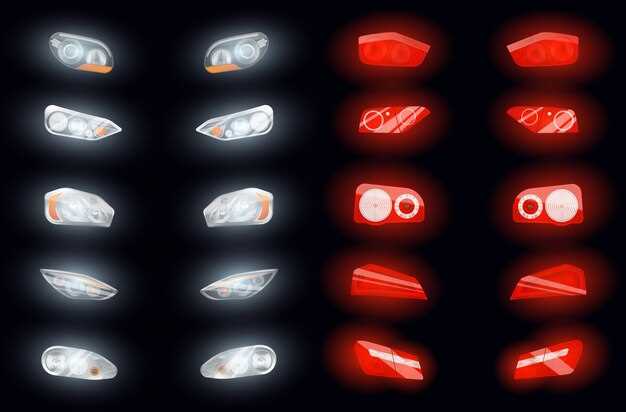
Upgrading your vehicle’s headlights to LED technology can significantly enhance your driving experience, providing brighter illumination, improved visibility, and a modern aesthetic. As more drivers recognize the benefits of LED headlights, they have gained popularity as a common aftermarket modification. However, the installation process can seem daunting, especially for those unfamiliar with automotive maintenance. This guide will walk you through the essential steps to successfully install LED headlights in your vehicle.
Understanding the advantages of LED headlights is crucial before diving into the installation. Unlike traditional halogen bulbs, LED headlights consume less energy and have a longer lifespan, reducing the frequency of replacements. Additionally, they emit a cooler color temperature, which not only enhances visibility but also creates a more appealing look. Once you’ve decided to make the switch, proper installation is key to ensuring optimal performance and longevity.
In this guide, we will cover everything from selecting the right LED headlight bulbs for your specific make and model to the step-by-step installation process. We will also address common troubleshooting tips and considerations to help you achieve a flawless upgrade. Whether you are an experienced DIYer or a novice looking to learn, this comprehensive guide will equip you with the knowledge needed to enhance your vehicle’s lighting system.
Choosing the Right LED Headlight Kit for Your Vehicle
When selecting an LED headlight kit, the first factor to consider is compatibility. Verify that the kit is designed specifically for your vehicle model and year, as different vehicles often require unique bulb sizes and connectors.
Next, consider the type of LED bulb you want. Common options include H1, H3, H4, H7, 9005, and 9006. Refer to your vehicle’s manual or existing bulb specifications to determine the correct type.
Brightness is another crucial factor. LED headlights are measured in lumens; for optimal visibility, look for bulbs that provide at least 3,000 to 5,000 lumens. Higher lumen output means brighter light, which improves road visibility during night driving or adverse weather conditions.
Color temperature also impacts performance and aesthetics. Look for a range between 5,000K to 6,000K, which offers a white light similar to natural daylight, enhancing visibility without being too harsh on the eyes. Color temperatures above 6,500K produce a bluish hue, which may not be legal in some jurisdictions.
Heat dissipation is vital for the longevity of LED bulbs. Choose kits that include integrated cooling systems, such as fans or heat sinks, to prevent overheating and ensure a longer lifespan. This feature maintains performance during extended use.
Finally, consider the warranty and customer support provided by the manufacturer. A decent warranty indicates a quality product and can protect against defects or premature failure. Furthermore, responsive customer support can assist with installation questions or concerns.
Tools You Need for a Successful Installation
Installing LED headlights in your vehicle requires several essential tools to ensure the process is smooth and efficient. Having the right tools not only makes the installation easier but also helps to prevent any damage to your vehicle’s electrical system or headlight housing. Below is a list of the primary tools you will need, along with their purposes.
| Tool | Purpose |
|---|---|
| Socket Set | Used for removing and tightening bolts and screws that secure the headlight assembly. |
| Flathead Screwdriver | Useful for prying off clips and entrapments that might hold the headlight assembly in place. |
| Phillips Screwdriver | Essential for loosening screws that may require a cross-shaped driver, common in most vehicles. |
| Wire Stripper | Needed for preparing the wiring if the LED installation requires modifications or extensions. |
| Electrical Tape | Used to insulate and secure any exposed wires after making electrical connections. |
| Multimeter | Helps in checking voltage and ensuring electrical connections are correct and safe. |
| Gloves | Worn to protect your hands and prevent any oils from your skin from touching the LED bulbs. |
| Towel or Cloth | Can be used to protect the vehicle’s surface and for cleaning purposes during the installation process. |
Having these tools handy will significantly assist in the efficient installation of LED headlights, making the process straightforward and minimizing the risk of errors. Always consult your vehicle’s manual for any specific requirements related to your model.
Step-by-Step Installation Process for LED Headlights

Installing LED headlights in your vehicle involves careful steps to ensure proper fit and functionality. Follow this guide for a successful installation.
-
Gather Necessary Tools and Materials:
- LED headlight conversion kit
- Wrench or socket set
- Phillips and flathead screwdrivers
- Wire connectors (if needed)
- Gloves and safety glasses
-
Prepare Your Vehicle:
- Park the vehicle on a flat surface and ensure the engine is off.
- Open the hood and locate the headlight assembly.
- Disconnect the negative battery terminal to avoid any electrical shorts.
-
Remove the Existing Headlight Bulbs:
- Access the headlight housing by removing any covers or screws.
- Twist the bulb socket counterclockwise to detach it from the housing.
- Gently pull the old bulb straight out to remove it.
-
Install the LED Headlight Bulbs:
- Take the new LED bulb and hold it by the base to avoid touching the glass.
- Insert the LED bulb into the socket, aligning the tabs properly.
- Twist the bulb socket clockwise to secure it back into the housing.
-
Connect the LED Headlight Assembly:
- Plug the LED driver into the vehicle’s connector, ensuring a snug fit.
- Tie up any excess wiring using zip ties to prevent interference with other components.
-
Test the New Headlights:
- Reconnect the negative battery terminal.
- Turn on the vehicle and switch on the headlights to verify functionality.
- Check both low and high beam settings to ensure proper operation.
-
Finish Up:
- Replace any covers or screws removed during installation.
- Close the hood and ensure everything is secure.
Following these steps will help you successfully install LED headlights in your vehicle, enhancing visibility and safety on the road.
Common Challenges During Installation and How to Overcome Them
Installing LED headlights can enhance your vehicle’s visibility and aesthetics, but several challenges may arise during the process. Understanding these issues and how to address them can lead to a smoother installation experience.
One common challenge is compatibility. Not all LED headlights are designed to fit every vehicle model. Before starting the installation, verify that the chosen LED headlights are compatible with your specific make and model. Consult your vehicle’s manual or check the manufacturer’s specifications to ensure a proper fit.
Another frequent issue is poor wiring connections. LED headlights typically require a different connector type than halogen bulbs. If you encounter mismatched connectors, consider using an adapter or modifying the wiring harness. Ensure all connections are secure and use electrical tape or heat shrink to insulate the wires to prevent any short circuits.
Heat management is also a challenge. LED headlights generate heat, and if not properly managed, this can lead to early bulb failure. Ensure that any cooling fans are oriented correctly and that there is sufficient airflow around the bulb. If your LED kit does not come with built-in cooling features, consider additional cooling solutions, like heat sinks.
Moreover, alignment can pose a problem. After installation, verify that the headlights are correctly aligned to avoid blinding other drivers. Most vehicles have adjustment screws that enable you to tilt or angle the headlights correctly. Test the alignment at night to ensure optimal performance.
Lastly, dealing with error messages or dashboard warnings may occur, particularly in vehicles with advanced lighting systems. LED bulbs may draw less power than halogens, leading to the computer system erroneously interpreting the reduced load as a bulb failure. In this case, installing resistors or a decoder can help eliminate these warning signals.
By anticipating these challenges and preparing for them, you can ensure a successful LED headlight installation that will provide enhanced visibility and style for your vehicle.
Testing Your LED Headlights After Installation
After installing your LED headlights, it’s essential to conduct a series of tests to ensure they function correctly and are aligned properly. Proper testing can help you identify any issues that may affect visibility or road safety.
Start by turning on your vehicle and activating the headlights. Observe the brightness and color temperature. LED headlights should produce a bright, white light that illuminates the road effectively. Compare the illumination to your previous headlights, if possible. Make sure there are no flickering or dimming effects, as these can indicate installation errors or faulty components.
Next, check the headlight alignment. Park your vehicle on a flat surface facing a wall about 25 feet away. Turn on your headlights and measure the height of the light beam on the wall. The center of the beam should be about 2 to 4 inches below the height of your headlights. If the beams are misaligned, adjust the headlight brackets according to your vehicle’s manual to achieve proper alignment.
Perform a road test at night. Drive in a low-traffic area and observe how well the headlights illuminate the road and surroundings. Pay attention to how they light up road signs, curbs, and pedestrians. Ensure that the light pattern is wide enough to cover the lanes without blinding oncoming drivers.
Finally, monitor the performance of your headlights over the following days or weeks. Look for any fluctuations in brightness or color changes. If issues arise, review your installation to ensure all connections are secure and correct.
By thoroughly testing your LED headlights, you can ensure they are functioning optimally, enhancing your visibility and safety on the road.
Maintenance Tips for Long-Lasting LED Headlights
LED headlights are known for their impressive longevity and energy efficiency, but proper maintenance is essential to ensure they perform optimally throughout their lifespan. Here are some effective tips to keep your LED headlights in great shape.
1. Regular Cleaning: Dust, dirt, and grime can accumulate on the surface of your headlights, reducing their brightness. Use a mild soap solution and a soft cloth to clean the lenses periodically. Avoid abrasive cleaners, as they can scratch the surface and affect light output.
2. Check for Moisture: Inspect the headlight housing for any signs of moisture buildup. If you notice condensation inside the lens, it may indicate a seal failure. Addressing this issue promptly can prevent damage to the LED components.
3. Ensure Proper Installation: Misalignment can lead to uneven wear and decreased efficiency. Regularly check that your LED headlights are properly aligned. Adjusting them may improve visibility and prevent premature failure of the bulbs.
4. Monitor Electrical Systems: LED headlights draw less power than traditional bulbs, but a malfunctioning electrical system can still cause problems. Keep an eye on fuses and wiring connections to ensure everything is functioning correctly.
5. Avoid Overheating: LEDs operate most efficiently at specific temperatures. Ensure adequate ventilation around the headlights. Avoid covering them with any material that can restrict airflow, especially in high-temperature conditions.
6. Use Quality Products: Invest in high-quality LED headlights from reputable manufacturers. Cheap alternatives may not provide the same longevity and performance, leading to more frequent replacements.
7. Follow Manufacturer Guidelines: Each LED headlight system may have specific maintenance recommendations. Refer to the manufacturer’s instructions to ensure you’re following the best practices for your particular model.
By adhering to these maintenance tips, you can maximize the lifespan and performance of your LED headlights, ensuring they provide bright illumination for years to come.
